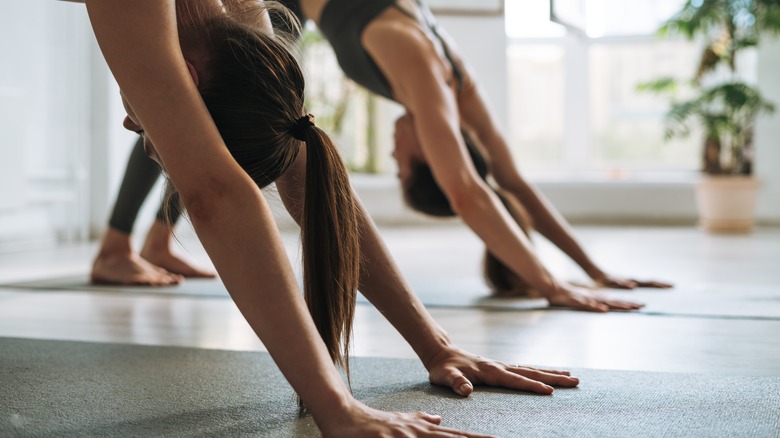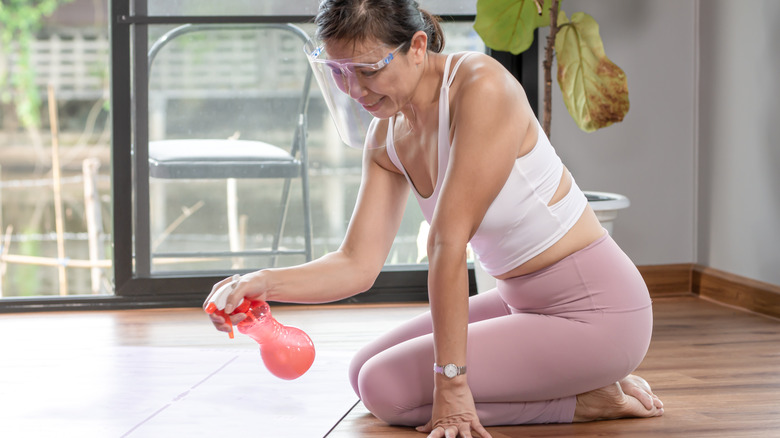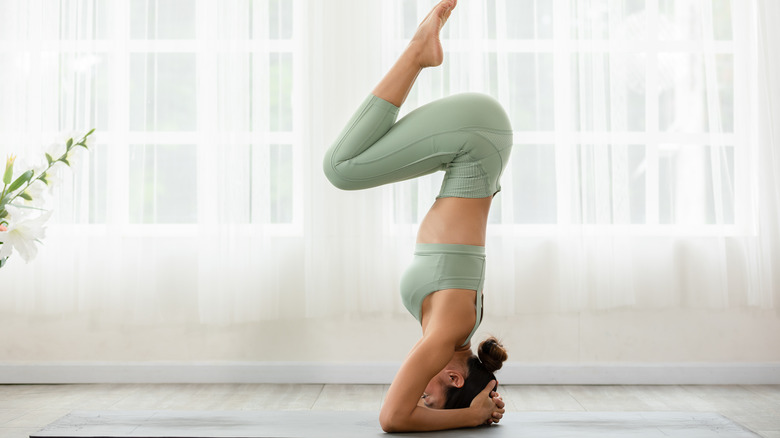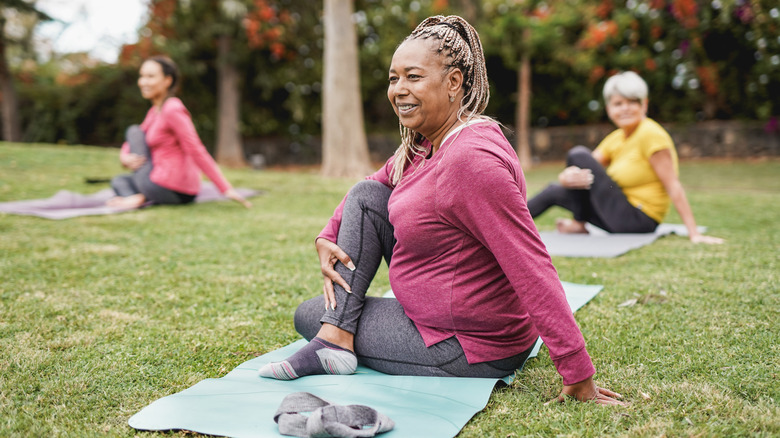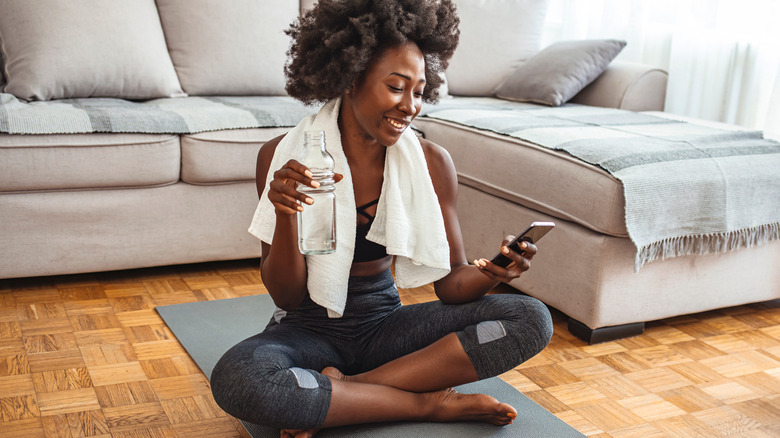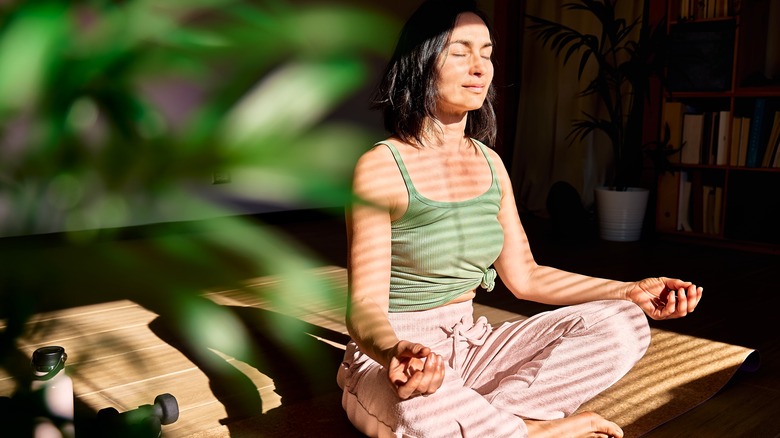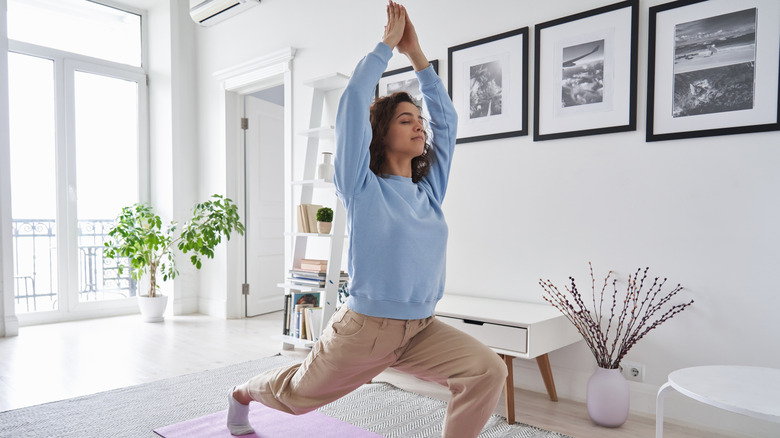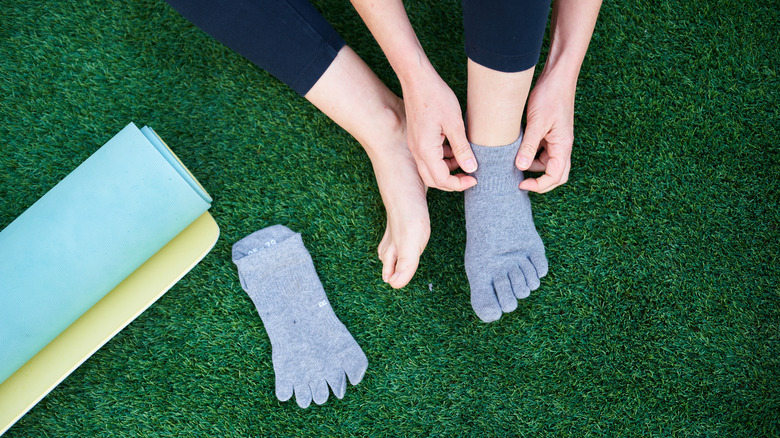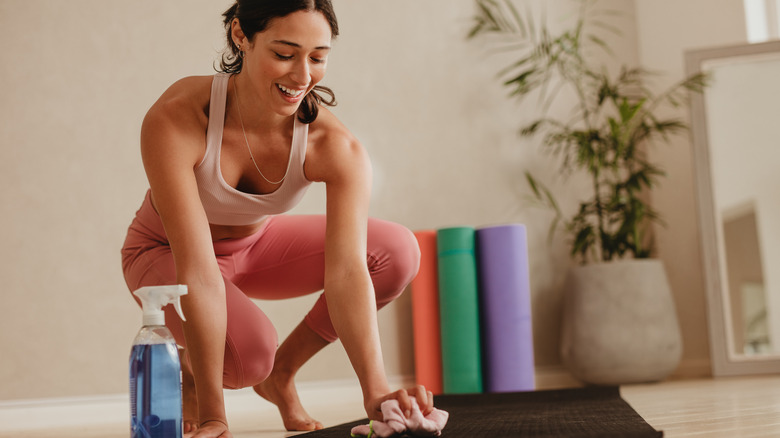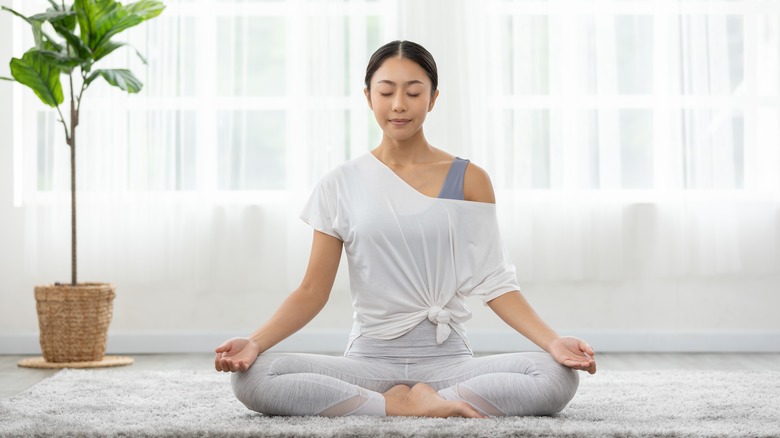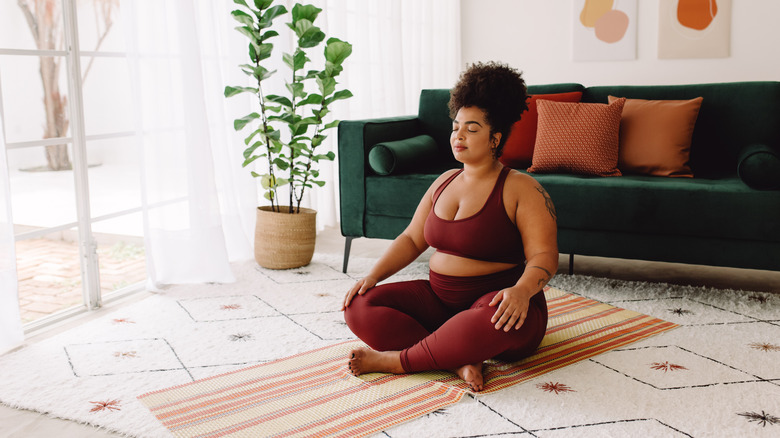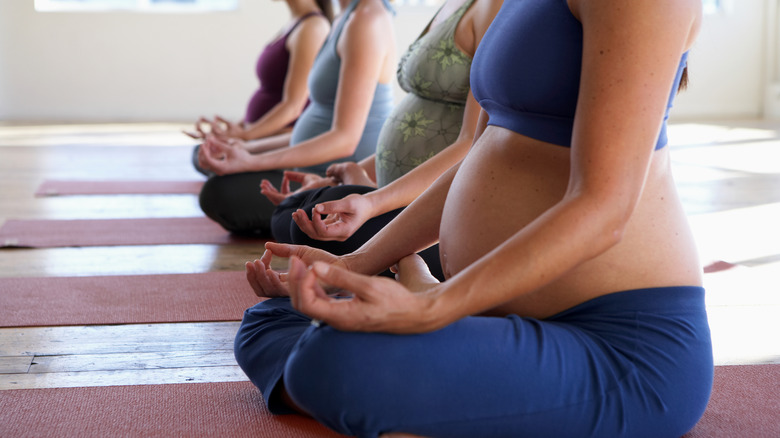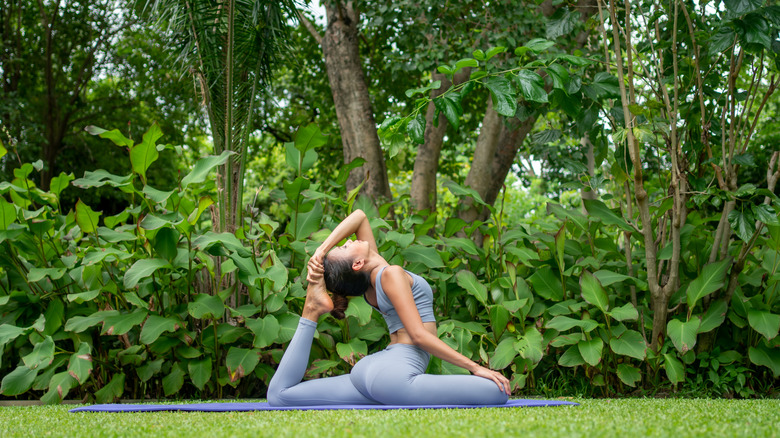Slipping And Sliding During Yoga Class? Follow These Tips For Breaking In A New Mat
Adding yoga to your fitness regimen may seem intimidating. While some have wondered if yoga is considered a workout, the overall consensus is that if you do certain types of flows, like vinyasa or power, you can burn quite a few calories. According to WebMD, these various flows can target different body parts, from your core to your legs, making for a tremendous strength-building exercise.
On top of the fitness benefits, studies have found that if you do yoga every day, you can reduce your stress levels, pick up focus, and even boost your energy throughout the day. There are many positive effects to adding a yoga practice to your daily routine.
Once you get started, finding the perfect mat can be difficult. There are so many brands and styles. Finally nailing down a favorite is just one obstacle. If you slip and slide during your practice, here are some tips and tricks to make your yoga journey easier.
Try washing your mat first
Believe it or not, the easiest way to keep your mat from sliding around while you're deep in your practice is a simple wash before using it. Yoga mats can be washed in the washing machine, something that many new Yogis don't know. Putting your mat in the machine for a wash cycle on cold can help. However, it's important not to twist or fold your mat during the process.
Instead of using a washing machine, you can dunk it in cold water and set it out to air dry.
Buy a non-slip mat
This may seem like common sense, but many yoga mats are not naturally designed to be slip-free. The material used to make yoga mats can vary, and if you're concerned about slipping and sliding, make sure your mat is thick and made of rubber, and thermoplastic elastomer (TPE). While these mats can be a bit more expensive, they will spare you the time of breaking in a cheaper mat. Material can be the main issue surrounding slipping about while practicing.
Spend some time breaking on your mat
If you have already purchased a mat before checking the material it is made with, have no fear. Simply breaking in your yoga gear can make a major difference when it comes to security during your flow. Yoga teacher Smriti Tuteja told The Edge that if you have a mat made of PVC, give it some time. "PVC mats, for instance, are slippery in the beginning and one needs to break them in to achieve grip." Keep practicing and it will get easier.
Try a towel
While instructor Smriti Tuteja told The Edge to avoid purchasing a cotton mat, as it will slide the most on hardwood or tile floor, adding a towel to your mat can help. Place a towel on top of your mat to help dry up the sweat that may be impacting your balance. The added layer can also help keep your feet from sliding while in difficult postures like downward-facing dog and low lunges. Give this method a shot and see if you feel more stable!
Avoid moisturizing before your practice
If you're rolling up to your yoga class freshly moisturized, you may want to put the lotion on hold until after your savasana. There is a chance that the oils within your product of choice are causing you to have less grip when on your mat. It may not be your mat at all, but rather the condition of your skin before you practice. While it may be second nature to apply lotion throughout your day, try skipping the ritual before your next class and see if you have more grip.
Shower first
This may sound counter-productive, especially if you're hitting a hot yoga class where sweating is the goal. However, there is a chance that taking a cold shower can help reduce body oils and sweat, giving you more stability on the mat. Natural body oils, especially from your hands and feet, can add a slippery component to your practice.
Plus, it's a great way to boost your energy and get your body's circulation geared up before you begin your postures. Be sure the water is cold, however, because a hot shower can cause you to get dizzy.
Invest in slip-free gloves and socks
If you've invested in a high-quality, slip-free mat but still find yourself unstable during your practice, it could be that you need gloves and socks to keep yourself from slipping around. Yoga socks are useful if you feel your feet sliding out from under you during complicated poses. These items have grips on them, keeping you stabilized during even the toughest downward-facing dog. They are perfect for preventing slipping, especially if you are attending hot yoga classes where sweat on your mat is to be expected.
Try wiping down your mat with water before each class
Adding some cold water to your mat before a class may seem silly if you are struggling with slipping and sliding. However, there are some stability benefits that come with a quick rinse and wipe-down with a microfiber towel. This can help remove oils and sweat from previous classes before jumping into your next one, allowing your hands and feet to grip easier. You can use this as a spot treatment, wiping down the areas you feel the least stable.
Use white vinegar after your class
Using vinegar on your yoga mat isn't always recommended. The acids can damage the material. However, when done correctly, wiping down your mat with white vinegar after a sweaty class can increase your grip before your next one. Mix just half a cup of vinegar with water, apply it to your mat, let it sit for a few minutes, then rinse with water. It also has antibacterial properties!
Be sure not to use apple cider vinegar, as it can be especially harmful to your mat.
A sea salt scrub can solve all your problems
Just like our face needs good exfoliating, so does your yoga mat. Believe it or not, creating a gentle scrub with sea salt can help decrease your chance of sliding around. All you need is a simple handful of sea salt. Rub it around on your mat, but be sure to be gentle. Focus on where your hands, knees, and feet tend to go while in various poses.
Check what your mat is made of before you try this. PVC, NBR, and TPE take well to this process, while some other materials do not.
Purchase some liquid chalk
If you've tried every option and still find your hands and feet to be your biggest enemy while in your yoga postures, you might want to invest in some liquid chalk, per Times of India. Sure, you may feel like a gymnast in the process, but these super athletes use this product for a reason. This will help you maintain stability with ease. Apply it before or during your practice for the best results. It's easy to use and can be simple to find.
Add some water droplets to your mat before your first pose
We've talked a lot about adding water to your mat before your practice, which seems odd if your issue is slipping and sliding. However, just a few drops of water on your mat before your class can help remove grease. Of course, be sure just to apply the slightest bit of liquid to your most slippery spots. Drenching your mat is not going to help you find stability, but a tiny bit of water can help you out.
